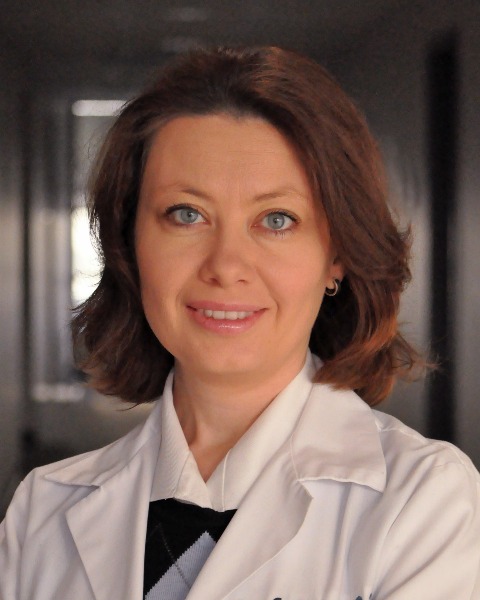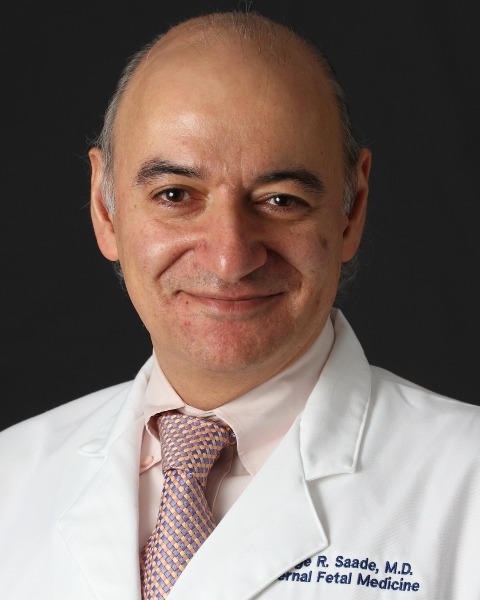Oral Plenary Session 2 - Fellows Plenary
(42) Small for gestational age prediction using unsupervised machine learning of first trimester fetal cardiac parameters
- RH
Rebecca Horgan, MD
Assistant Professor
Macon & Joan Brock Virginia Health Sciences Eastern Virginia Medical School at Old Dominion University
Norfolk, Virginia, United States 
Elena Sinkovskaya, MD, PhD
Professor
Macon & Joan Brock Virginia Health Sciences Eastern Virginia Medical School at Old Dominion University
Norfolk, Virginia, United States- EK
Erkan Kalafat, MD, MSc
Associate Professor
Koc University Hospital
Istanbul, Istanbul, Turkey 
George R. Saade, MD (he/him/his)
Professor and Chair, Associate Dean for Women's Health Obstetrics and Gynecology
Macon & Joan Brock Virginia Health Sciences Eastern Virginia Medical School at Old Dominion University
Norfolk, Virginia, United States
Alfred Abuhamad, MD (he/him/his)
Executive Vice President, Virginia Health Sciences at Old Dominion University
Eastern Virginia Medical School
Norfolk, Virginia, United States
Submitting Author and Presenting Author(s)
Coauthor(s)
To use unsupervised machine learning techniques on first trimester fetal cardiac parameters to predict risk of subsequent small for gestational age (SGA) birthweight.
Study Design:
This was a prospective cohort study which enrolled patients at ≤ 13+6 weeks’ gestation without fetal, umbilical cord or placental abnormalities. At the 1st trimester ultrasound, the chest area, heart area, ventricular inlet lengths, spectral and color Doppler of the atrioventricular valves, valvular regurgitation and myocardial performance index were assessed. K-Medoids clustering was applied to sort fetuses into risk groups for SGA, defined as a birthweight < 10th percentile for gestational age. Candidate variables were selected with regression analyses and the Elbow method was used to determine the optimal number of clusters. Cumulative rates of outcomes were plotted with Kaplan-Meier analysis and model performance was tested with area under the curve values with repeated cross-validation.
Results:
617 pregnancies were included in the analysis, of whom 45 (7.3%) delivered an SGA neonate. Z-scores of chest area (P=0.027) and tricuspid valve E/A ratio (P< 0.001) showed an independent association with delivery of an SGA neonate and were used in the clustering algorithm. Unsupervised learning algorithm found 3 risk clusters, low (n=202), intermediate (n=217), and high (n=198). The rates of SGA (1.0%, 5.5% and 15.7%, P< 0.001) and non-reassuring fetal heart rate tracings (3.0%, 6.0% and 9.1%, P=0.036) differed significantly between the three risk clusters (Figure 1). AUC values of the model in cross-validation samples were 0.79 (IQR: 0.76 – 0.81). Using low risk cluster as a threshold, model sensitivity was 95.5% and specificity was 35.0%. The negative predictive value for ruling out SGA was 99.0%. Unsupervised machine learning of first trimester fetal cardiac parameters can effectively stratify risk for SGA neonates. Our findings support the hypothesis that fetal growth trajectory is impacted by early development and may explain the association between fetal growth and programming of adult cardiovascular function.
Conclusion:

